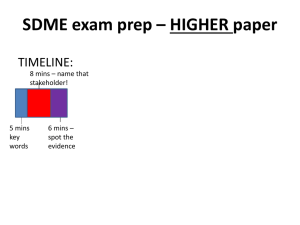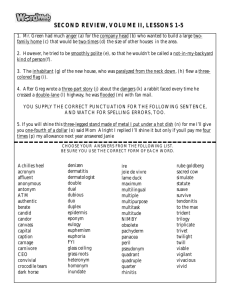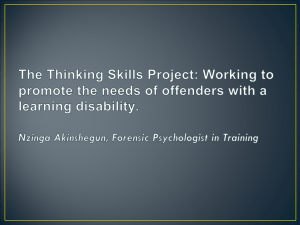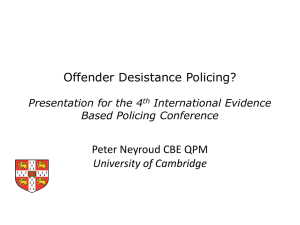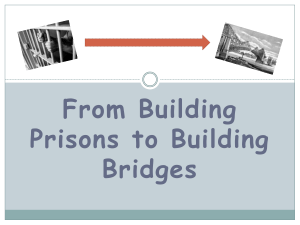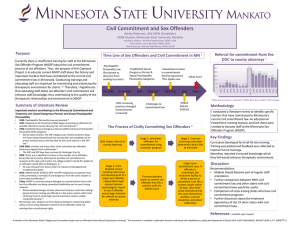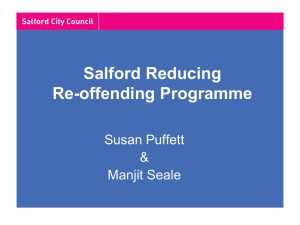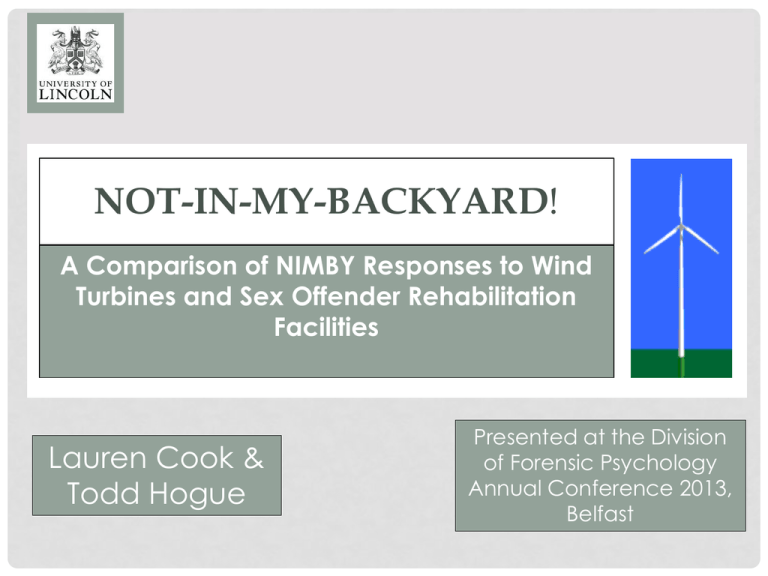
NOT-IN-MY-BACKYARD!
A Comparison of NIMBY Responses to Wind
Turbines and Sex Offender Rehabilitation
Facilities
Lauren Cook &
Todd Hogue
Presented at the Division
of Forensic Psychology
Annual Conference 2013,
Belfast
INTRODUCTION
• NIMBY (Not-In-My-Backyard) refers to the social
rejection of the location of a facility
• It’s a response seen to a number facilities.
• Wind Turbines often encounter opposition
• noise, harm to wildlife, electromagnetic
interference, decrease housing prices and
visual impact
• Factors effecting NIMBY response to wind
turbines
• Experience (Krohn & Damborg, 1999), gender
(Clancy & Roehr, 2003) & age (Fischer, Morgan,
Fischhoff, Nair & Lave, 1991)
INTRODUCTION
• Sex offender rehabilitation facilities and NIMBY?
• NIMBY has previously been criticised
• Too simplistic (Wolsink, 1996)
• Utilised but rarely explained, leading to
research which has been poorly grounded in
existing social science theory
• NIMBY
• Risk perceptions, place identity, social
distance, equity theory, rational choice
AIM & HYPOTHESES
• If a NIMBY reaction exists to the placement of
facilities
• This includes distinguishing whether there is a
general or specific NIMBY reaction
• Find the differences (if any) between NIMBY
responses to sex offender rehabilitation facilities
and wind turbines
• See if attitudes towards sex offenders effect
NIMBY responses to sex offender rehabilitation
facilities
METHOD
•
•
•
•
•
Online study- Opportunity Sampling
165 participants, 71 females and 94 males.
Demographic
Vignettes
NIMBY questionnaire
• Wind Turbine NIMBY Questionnaire- WTNQ
• Sex Offender Rehabilitation NIMBY QuestionnaireSONQ
• “It would create useful benefits to society”
• “I would demand it to be placed elsewhere”
• Attitude Toward Sex Offenders (ATS; Hogue,
1996)
RESULTS
• New NIMBY questionnaire being used
• Pearson’s correlation, Crobach’s alpha, factor analysis
• A paired t-test was carried out on the WTNQ and
SONQ to see the differences
• All pairs of questions and totals were significantly
different
• A Pearson’s correlation
was performed to see if
attitudes towards sex
offenders had an effect
on the SONQ.
[r (163)= -0.632, p < 0.001]
RESULTS
• One way ANOVAs were run on the difference
score created (SONQ-WTNQ) and
demographic variables
• Political vote, age, parenthood, gender,
experience of working in the renewable
energy sector, experience of working with sex
offenders- Non-significant results on the
difference score
• Type of sex offender [F(6, 158)= 2.380,
p=0.031]
• Analysis of Covariance (ANCOVA) -ATS covariant [F(6,
157)= 1.135, p=0.345].
• Neighbourhood Type [F(1, 162)= 7.559, p=0.007].
• ANCOVA -ATS covariant. (F(1, 161)= 5.614, p=0.019).
Partial Eta Squared = 3% .
DISCUSSION
• Interesting results were seen in the mean scores:
• Positive attitudes towards sex offenders- lower
SONQ scores
• Liberal Democrat voters lowest mean score for
WTNQ & SONQ
• Type of sex offender with the highest difference
scores were ‘rapists and paedophiles’ and
‘paedophiles’.
• 18-24 year olds had the lowest mean on SONQ &
WTNQ
• Parents had higher means on SONQ & WTNQ
DISCUSSION
• Women had higher means WTNQ & SORFNQ.
• Those with experience of working with sex
offenders had the lowest mean on SONQ.
• Those with experience of working in the
renewable sector had the highest mean on
WTNQ.
• Rural neighbourhoods had the highest means
on SORFNQ and urban neighbourhoods had
the highest mean for WTNQ .
CONCLUSIONS
• Overall, the results of the study provided information on
sex offender rehabilitation facilities and NIMBY responses.
• Future placements of sex offender rehabilitation facilities.
• NIMBY hierarchy??
• Neighbourhood type and attitudes toward sex offenders
played an important role in the strong NIMBY responses
toward sex offender rehabilitation facilities.
• This study has provided a beginning into NIMBY reactions
towards sex offender rehabilitation facilities, with
numerous studies which could follow to investigate this
further.
• Other human facilities, experience and neighbourhood type,
knowledge & real life study
REFERENCES
• Clancy, J., & Roehr, U. (2003). Gender and energy: is there a northern
perspective? Energy for Sustainable Development, 7(3), 44-49.
• Dear, M. (1992). Understanding and overcoming the NIMBY syndrome.
Journal of the American Planning Association, 58(3), 288-300. doi:
10.1080/01944369208975808
• Fischer, G.W., Morgan, M.G., Fischhoff, B., Nair, I., & Lave, L.B. (1991).
What risks are people concerned about? Risk Analysis, 11(2), 303-314.
• Hogue, T. (1993). Attitudes towards prisoners and sexual offenders. Issues
in Criminological and Legal Psychology, 9, 27-32.
• Krohn, S., & Damborg, S. (1999). On public attitudes towards wind
power. Renewable Energy, 16, 954-960. doi: 10.1016/S09601481(98)00339-5
• Pol, E., Di Masso, A., Castrechini, A., Bonet, M.R. & Vidal, T. (2006).
Psychological parameters to understand and manage the NIMBY
effect. European Review of Applied Psychology, 56(1), 43-51. doi:
10.1016/j.erap.2005.02.009
• Wolsink, M. (1996). Dutch wind power policy: Stagnating
implementation of renewable. Energy Policy, 24(12), 1079-1088. doi:
10.1016/S0301-4215(97)80002-5
• Wolsink, M. (2000). Wind power and the NIMBY-myth: Institutional
capacity and the limited significance of public support. Renewable
Energy, 21(1), 49-64. doi: 10.1016/S0960-1481(99)00130-5
QUESTIONS?
• Any queries or questions please feel free to contact
me via email:
lauren.cook4@hotmail.co.uk


